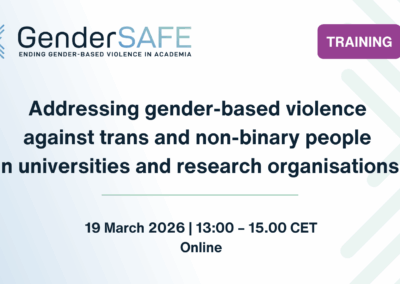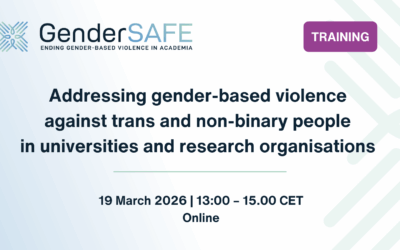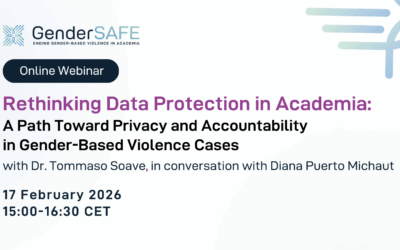When working to promote and implement effective responses to gender-based violence, change agents come across all sorts of resistances… This blog series aims to provide support by reframing arguments commonly encountered and help navigate challenging conversations with clarity, confidence and purpose. Drawing on the principles of strategic framing, this resource provides a better understanding and anticipation of common forms of resistance, as well as evidence-based, values-aligned messaging.
According to the UniSAFE prevalence survey (2022), only 13% of those who experienced gender-based violence in academic settings formally reported the incident. The most common reasons for not reporting included fear of retaliation, concerns about confidentiality, uncertainty about procedures and the belief that nothing would change. Many respondents also reported normalisation of the behaviour or a lack of awareness about where or how to report. These findings reveal that low reporting is often a systemic issue, not a personal failing. In fact, high reporting levels may be a sign of trust in the system and not of increased incidence.
“If people aren’t reporting, it’s not because nothing is happening, it’s because they may not feel safe or supported enough to come forward.”
Insight from practice: Institutions should view underreporting as a diagnostic indicator, a sign that policies may exist, but procedures, communication or trust are lacking. The institution can reframe the issue by acknowledging that one of its responsibilities is to remove barriers to reporting, not to wait for cases to surface. This shifts the narrative from passive reception to active responsibility.
- “Silence doesn’t mean safety, it may mean fear.”
- “It’s not about whether people report, it’s about whether they feel they can.”
- “Encouraging reporting is not about numbers. It’s about building trust.”
Change agents can work across departments to map out where trust breaks down and what prevents people from coming forward. They can push for institutional audits, promote survivor-centred communication and ensure that reporting procedures are transparent, accessible and supported by trained staff. By naming the silence as structural rather than personal, they help reframe low reporting as an institutional signal, not a reason for complacency
Understanding the Resistance
This assumption that “people would report gender-based violence” places the burden of proof on victim/survivors and misunderstands the dynamics of gender-based violence. Reporting is deeply influenced by institutional culture, perceived risks and the accessibility of support systems. In academic environments marked by hierarchical structures, power imbalances and close professional dependencies, the risks of reporting can be perceived as too high. Rather than interpreting silence as absence, institutions must ask: “What are the barriers to speaking up?” Building a safe institution means recognising that trust, not visibility, is the true measure of institutional responsiveness. This belief often stems from a desire to see measurable “proof” before taking action. It may reflect a defensive institutional posture or a narrow view of evidence based solely on formal complaints. Institutions may also fear that increased reports will signal a problem, rather than reflect progress in trust and disclosure.
Communicating with different stakeholders
- To leadership: Emphasise that proactive reporting systems are an asset, not a risk, showing the institution is prepared to respond.
- To faculty/staff: Encourage them to act as safe points of contact and reassure them that guidance and protocols are in place.
- To students: Communicate that reporting is voluntary, confidential and linked to meaningful support, not punishment or exposure.






